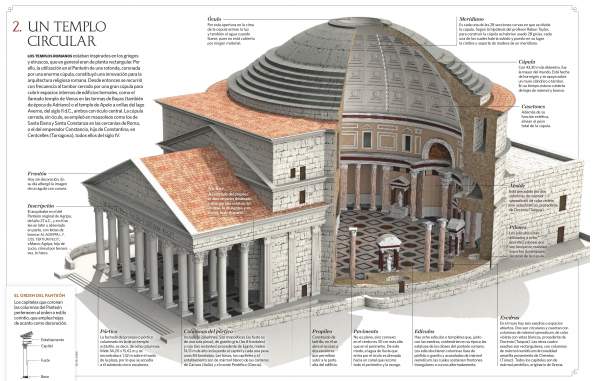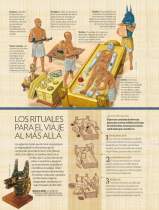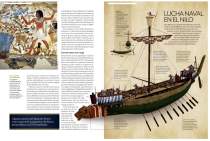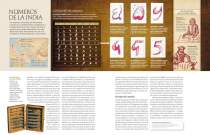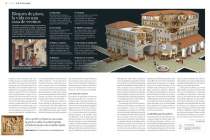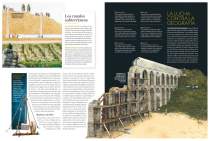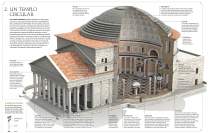National Geograpic Historia - Spain
-
Mummification
The graphic elements of the original infographic Rituals of Mummification were part of the report entitled Journey to the Beyond: Anubis the Guardian of Mummies, which the famous magazine National Geographic Historia, in its Spanish edition, dedicated to the embalming of mummies in Ancient Egypt. Adapted to the needs of the publication, the illustrations served to explain the role played by the different protagonists and elements which were present in each of the steps of the mummification process of the bodies of the deceased.
Page(s): 26
-
Egyptian War Galley
Ancient Egypt did not stand out for its seafaring traditions, despite having a considerable river fleet to cross the Nile, which was the source of its prosperity. However, during the New Empire, when external threats arrived by sea, Pharaoh Ramses III (1184-1153 BC) ordered the construction of warships that managed to defeat the fearsome Sea Peoples, from then on, Egypt began to show increasing interest in maritime navigation. National Geographic Historia offered a comprehensive report on The Pharaoh's Ships: From the Nile to the Great Maritime Expeditions. In this report it appears the recreation of an Egyptian war galley that participated in the Battle of the Delta in the year 1177 BC.
Page(s): 30-31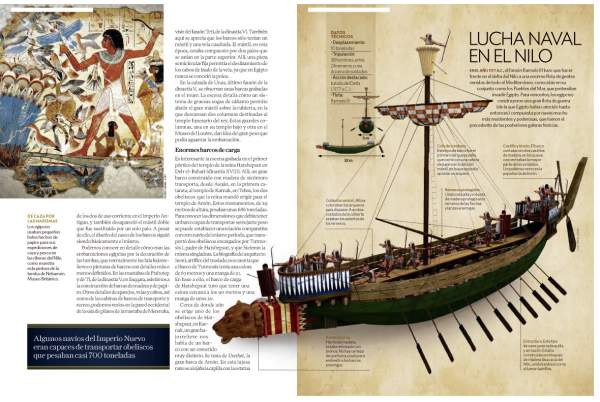
-
Numbers
The original infographic material was rearranged by National Geographic Historia and adapted to its layout needs. Both the infographic and the magazine article, refer to the appearance and divulgation of the Arabic or Indian numbers (numerals) in Europe during the Middle Ages. The replaced images, taken from the Infographics90 infographic, show the evolution in the graphics of the numbers (among which the one of number 5 stands out) and the images of two mathematicians or accountants (one of them with an abacus and the other one doing annotations on a smooth surface). The Arabic numeral system dramatically simplified the calculations and the representation of quantities in excess of one million units. Before generalization of this system, the results of arithmetic operations were represented by Roman numerals.
Page(s): 24-25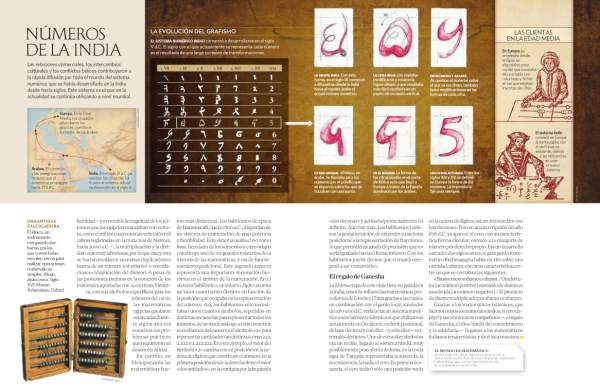
-
Don Juan de Austria's Galley “La Real”
In the extensive report dedicated to the Battle of Lepanto, National Geographic Historia included, in its Spanish edition, a picture of the “La Real” Galley of Don Juan de Austria, the commander of the Christian coalition, made up of Spanish, Genoese, Venetian and Saboyans soldiers, besides of those from the pontifical states and of the Order of Malta. On October 7th 1571, the Christian fleet defeated the Ottoman one, which was superior in number, in the Gulf of Corinth, in Greece. The victory had a huge propaganda effect. Despite this, the Turks continued to maintain their naval dominance in the eastern Mediterranean until the 18th century.
Page(s): 88-89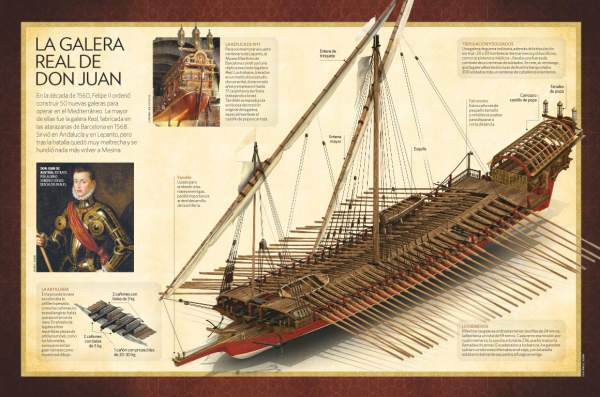
-
Roman Insula
Everyday Life is a fixed section that appears on the first pages of the Spanish edition of the magazine National Geographic Historia. It addresses issues related to the lifestyle, customs, habits and uses of different societies throughout history. A common theme is housing and, to illustrate how the humble classes lived in ancient Rome, the client inserted the infographic of the insula, the typical Roman multi-family and multi-storey house, whose characteristics and services are shown in section view.
Page(s): 20-21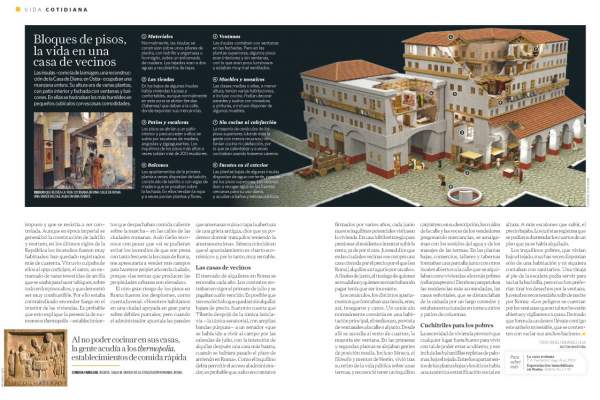
-
Roman Aqueduct
The infographic of the Roman aqueduct presided over the report dedicated by National Geographic Historia to these hydraulic infrastructures, entitled The Aqueducts, Pride of Rome. In addition to causeways and bridges, the aqueducts are among the most abundant and spectacular engineering works of Roman wit and of antiquity. Before the first century of the Christian era, Rome, the capital of the empire, was constantly supplied with water by seven different aqueducts. The shortest aqueduct measured 16,5 km, and the longest was almost 91,5 km long. In the 3rd century AC came to have eleven aqueducts in service. The layout of most of them was underground. However, to overcome great differences in height, arches were built such as those of the aqueducts of Segovia, Mérida and Tarragona, in Spain, and that of Nimes (Pont du Gard), in France, declared a World Heritage Site by UNESCO.
Page(s): 56-57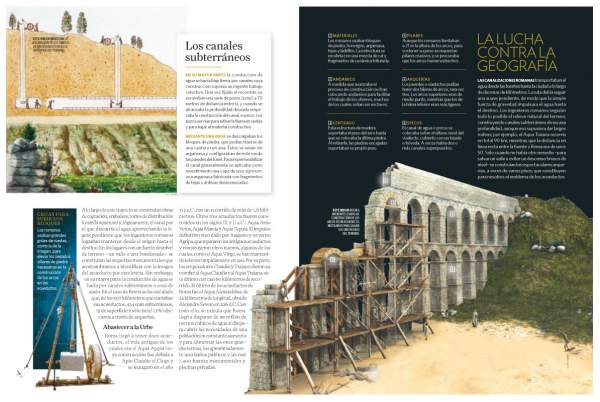
-
Persepolis
Founded in 518 BC by King Darius I (549-486 BC), Persepolis was the capital of the Persians until they were conquered by Alexander the Great in 331 BC. National Geographic History dealt with this monumental city in the report entitled Persepolis: The Lavish Court of the Persian Kings, and included the infographic that reconstructs the splendid city of the Achaemenid dynasty. Both for its location, on a terrace of Mount Kuh-e Rahmat, in the current province of Fars, and for its dimensions, its structure and the magnificence of its monumental architecture, based on Mesopotamian models, Persepolis is unmatched among the capitals of Antiquity. It was a palatial city, dedicated to great religious and State ceremonies, and to impress foreign legations, although there is controversy regarding its functions. The Apadana, the Tachara, the room of the 32 columns and the palaces of the Treasury and of the Hundred Columns are some of the best-known constructions of this unique monumental complex, a work of Darius I and of his successors: Xerxes I and Artaxerxes I. Nearby, excavated in the rock of Kuh-e Rahmat, at the site called Naqsh-e Rostam, are the tombs of several sovereigns of the Achaemenid dynasty. UNESCO declared Persepolis a World Heritage Site in 1979.
Page(s): 40-41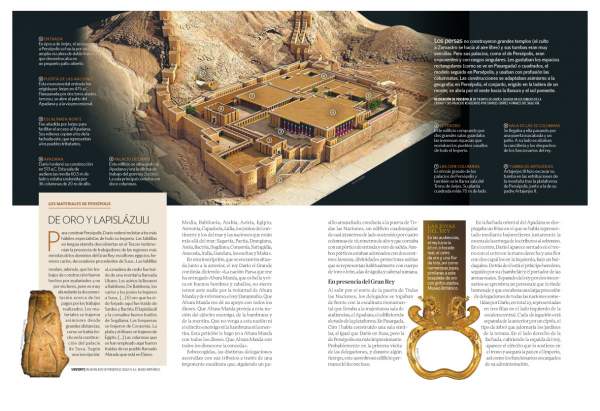
-
Pantheon of Agrippa
The Pantheon of Agrippa is one of the most fascinating legacies of the architecture of ancient Rome. National Geographic Historia selected the Roman Temples infographic to show the exceptional nature of this building in the The Pantheon in Rome, The Last Wonder of Antiquity Report. This unique temple has one of the most majestic domes in the world, whose diameter and height are 43 meters. Its construction was projected and commissioned by the general, politician and architect Marcus Agrippa (63-12 BC), during the government of his father-in-law and friend, Emperor Augustus (27-14 BC), and concluded in 126 AC by the Emperor Hadrian (76-138 AC).
Page (s): 78-79